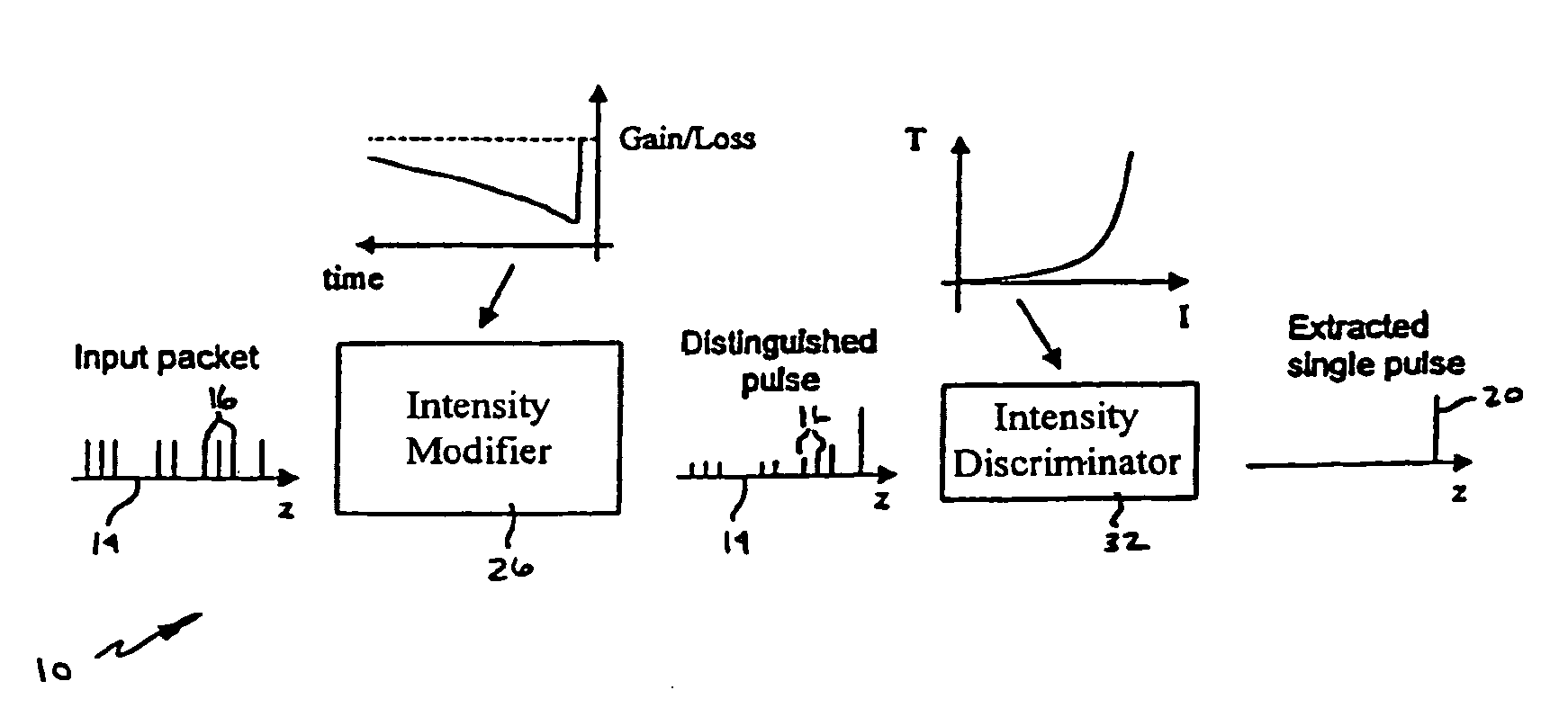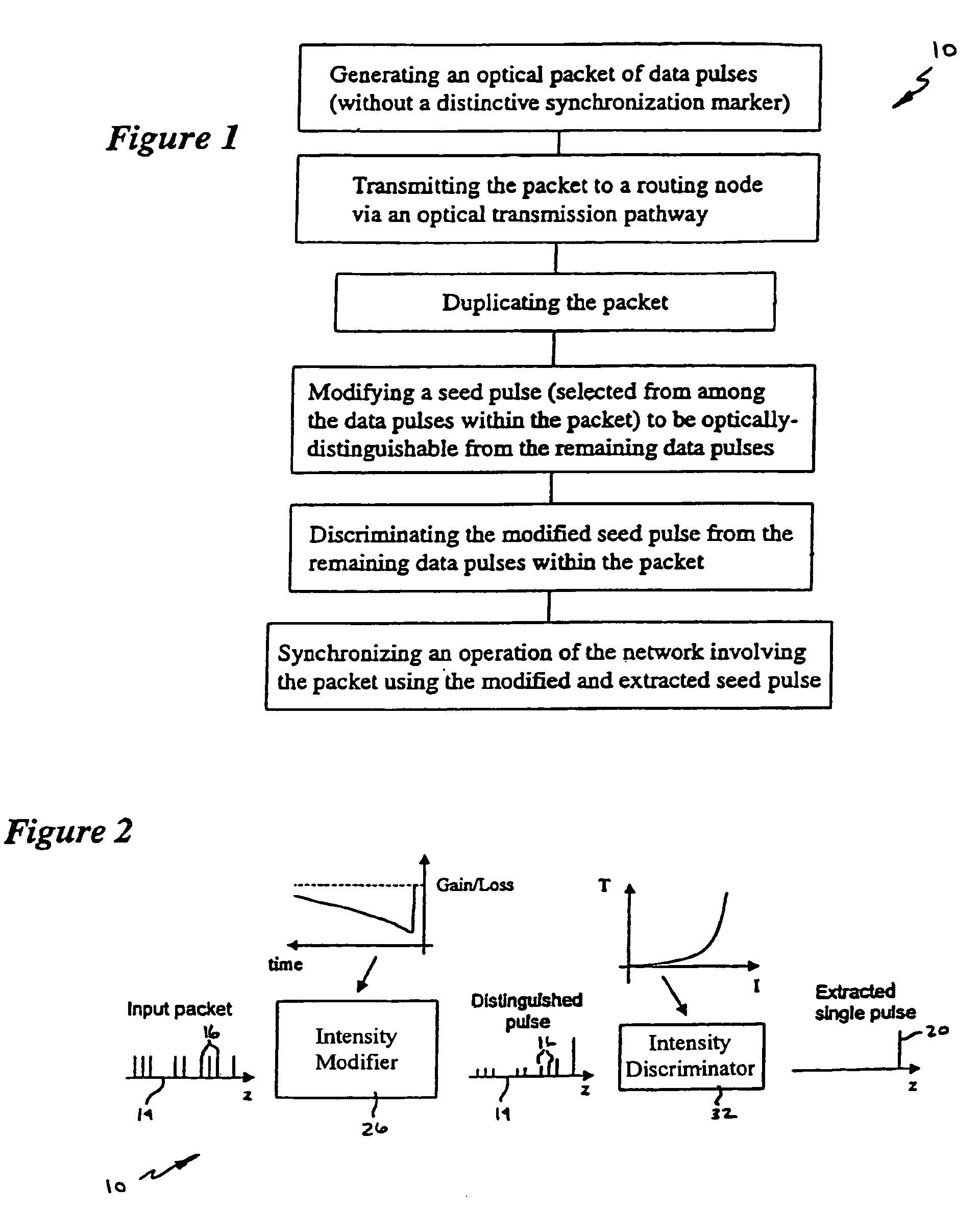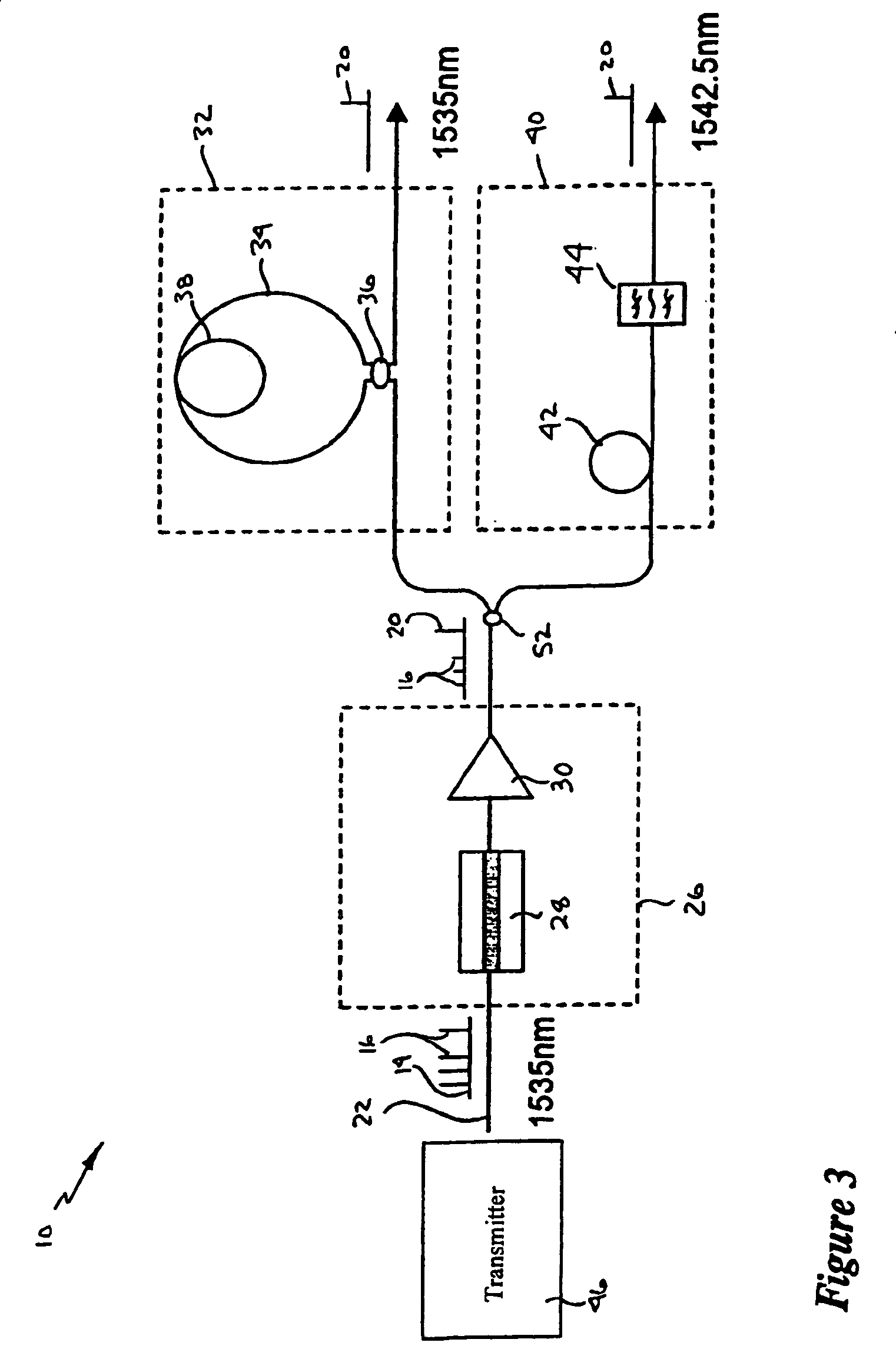Self-synchronization of an optical packet network using seed pulses extracted from within the packets
a packet network and packet technology, applied in the field of self-synchronization of an optical packet network, can solve the problems of not being able to provide optical processors capable of interpreting, unable to adequately accommodate timing jitters between transmitted optical packets, and unable to achieve the effect of converting to the electronic domain, which would defeat the advantage of using a high-speed optical network
- Summary
- Abstract
- Description
- Claims
- Application Information
AI Technical Summary
Benefits of technology
Problems solved by technology
Method used
Image
Examples
Embodiment Construction
[0034]Reference will now be made in detail to preferred embodiments of the present invention, examples of which are illustrated in the accompanying drawings. Wherever possible, the same reference numbers will be used throughout the drawings to refer to the same or like parts.
[0035]An exemplary embodiment of the method 10 of self-synchronizing an packet time-division multiplexed (TDM) optical network 12 of the present invention is shown in FIG. 1, and both the method and the associated system of this invention are designated generally throughout by that reference numeral 10.
[0036]In accordance with the invention, referring particularly to FIG. 1, the method 10 of the present invention is practiced by generating a packet 14 including a plurality of data pulses 16 which omits or excludes a distinctive timing or synchronization marker that is optically distinguishable from the data pulses 16 in the packet 14, transmitting the packet 14 to a generally remote routing node 18 or other comp...
PUM
 Login to View More
Login to View More Abstract
Description
Claims
Application Information
 Login to View More
Login to View More - R&D
- Intellectual Property
- Life Sciences
- Materials
- Tech Scout
- Unparalleled Data Quality
- Higher Quality Content
- 60% Fewer Hallucinations
Browse by: Latest US Patents, China's latest patents, Technical Efficacy Thesaurus, Application Domain, Technology Topic, Popular Technical Reports.
© 2025 PatSnap. All rights reserved.Legal|Privacy policy|Modern Slavery Act Transparency Statement|Sitemap|About US| Contact US: help@patsnap.com



